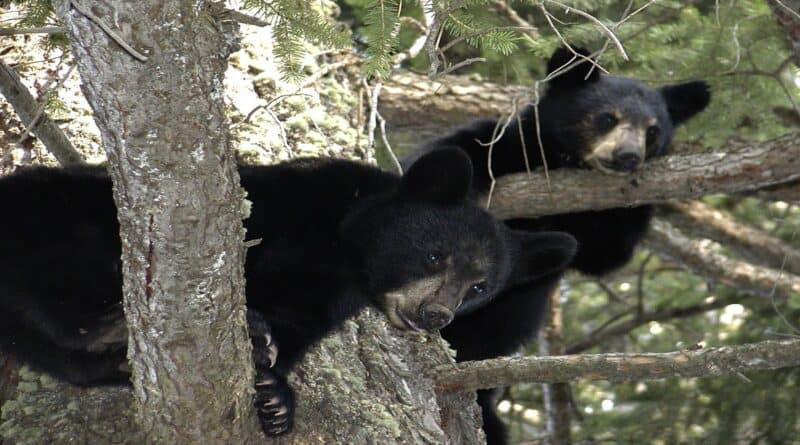Need to Know: Can Bears Climb Trees?
June is Great Outdoors Month and National Camping Month. Lots of us are getting outside, whether hiking, biking, camping or backpacking.
The bears have gotten back out, too. We’re starting to see black bears on the trails every now and again – straight in front of us.
But should we look up or just focus on the trail ahead? Do bears climb trees? Do I have to always keep my head on a swivel when hiking?
Regardless of where they are, it’s always important to be bear aware for both your safety and that of any bear you may encounter.
Can Bears Climb Trees?
You don’t have to worry as much about grizzly bears in Virginia (though we’ll talk about their climbing abilities later), but you should be aware of black bears.
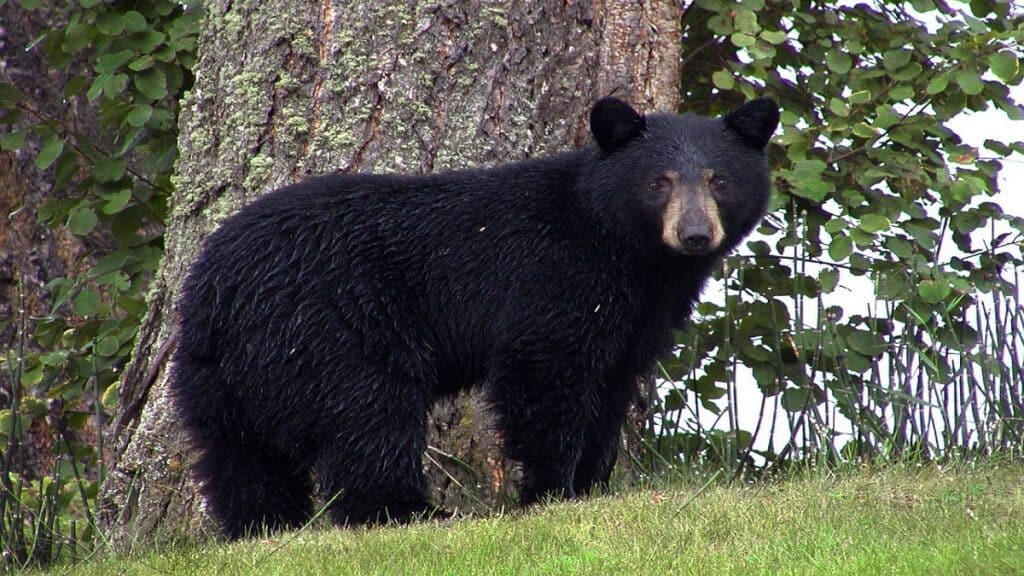
So, can bears climb trees? Well, the short answer is yes, bears can and do climb trees. You don’t need to worry about drop bears but keep your eyes up.
Of all bears, black bears are the climbers to keep top of mind. This is partially because black bears are the bears you may encounter in Virginia.
The other reason is that black bears are the most adept of all bears when it comes to scaling trees.
That being said, brown bears (also known as grizzly bears in North America) can still climb trees, though cubs are more likely to climb than adults.
Should you run into a polar bear in Virginia, take solace that they can’t climb trees. After that, question how the polar bear made it to the east coast.
How Do Bears Climb Trees?
With varying difficulty, depending on the bear species. Black bears are adept climbers and can scale a tree quite easily.
Black bears have hooked claws that make climbing trees easier for them. Using their front legs to grip, they push themselves up the tree with their back legs.
When descending trees, black bears do the same thing but in reverse. Grizzly bears don’t have this luxury, so they find thick branches to pull themselves up.
Since grizzly bears are much larger and heavier, they need to be strategic when scaling the trees, meaning they can’t ascend as quickly.
Why Do Bears Climb Trees?
It’s not for a better view, that’s for sure. There are actually several main reasons a bear may climb a tree, and some might surprise you.
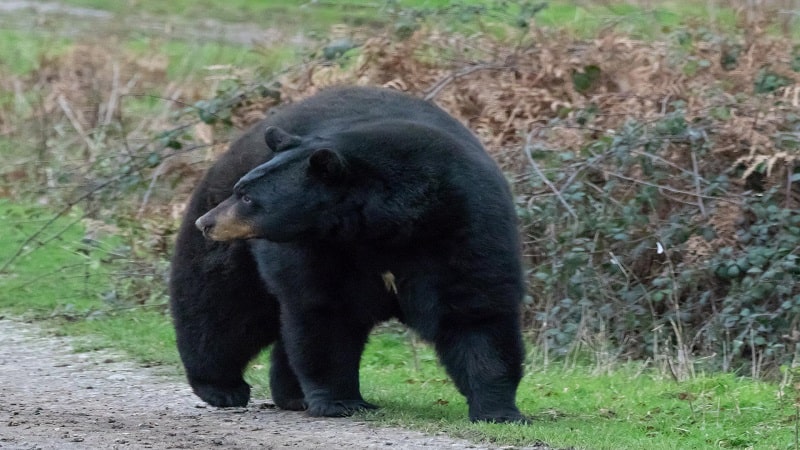
First, and most counterintuitive, is that they’re hiding from predators. Yes, bears actually have predators. Who might be their predator? Well, humans, for one.
Black bears may not climb a tree to hide from you, but they may climb to escape mountain lions, wolves, or even grizzly bears.
Bears are omnivores, so they sometimes scale trees to collect and eat fruit or nuts. Beyond that, they may just want to rest up there.
What Should I Do if I See a Bear?
If you encounter a black bear, your goal is to make yourself look as big and threatening as possible. Get large and make lots of noise.
Black bears tend to be scared off by size and noise, but you still want to keep your distance when being loud and large.
Grizzly bears don’t play by the same rules. You can’t get larger than a grizzly bear, so they won’t scare as easily; thus, your strategy changes.
If a grizzly bear isn’t approaching you, you want to walk away slowly and quietly. Talk calmly, so the bear sees you as a human instead of prey.
Keep your backpack on regardless of the bear. Should you end up being attacked, that backpack will offer valuable protection for vital organs.
Chatting with a bear may sound strange, but it’s important to do that and slowly wave your arms while backing away from the encounter.
What Should I NOT Do if I See a Bear?
This also depends on the bear, but there are actually greater similarities here. The first thing to do is avoid running away or approaching the bear.

If you panic and run, there’s a good chance that both black and grizzly bears will chase you. You shouldn’t climb trees either, but especially around black bears.
Don’t scream or make loud noises if you see a bear who hasn’t noticed you. You want to leave before they recognize you’re there.
If you can’t leave, do not try to fight a grizzly bear. These are massive animals, and you won’t win that battle.
For black bears, do the exact opposite. Do not play dead; it doesn’t work with black bears. You want to fight back as aggressively as possible.
The last thing is don’t freeze. Easier said than done, yes, but it’s of the utmost importance to be prepared. Don’t be stingy with your bear spray if charged.
How Common are Bear Attacks?
Unlike movies might make you think, they aren’t all that common, nor should you be fearful of going for a hike after reading this.
Humans encounter bears with some regularity throughout the year. Of all the encounters, an incredibly small number ended with a bear attack.
The National Park Service says that the odds of a bear attack are roughly 1 in 2.1 million. Bears don’t want to attack you; they’d much rather avoid you.
Unless you’ve come between a mother and her cubs or a starving bear and a source of food, the odds that you’ll be attacked are astronomical.
Black Bear Safety Tips
As long as you’re well prepared for a black bear encounter, there isn’t much to worry about. Even in black bear country, your odds of seeing one are low.

That being said, it’s essential to be prepared. On the off chance you do encounter a black bear close up, your training will take over.
Tip 1: Know the Area
Where are you hiking? Is it bear country? Are bears roaming or hibernating? Research your trail and get info from other hikers – that’ll go a long way.
AllTrails or other similar hiking apps are a great starting point. If there’s a visitor center or ranger station, ask about bear activity before hiking.
Tip 2: Say “Hey, Bear!”
Announce your presence, especially if you’re going through foliage of any kind where bears may populate. “Hey, bear” or any other chant you like is great.
Most bear attacks come from some sort of provocation. Oftentimes it’s because a hiker startled a bear. Let the bear hear you before seeing you.
Tip 3: Wear a Bear Bell
Whether you make one at home or buy a bear bell, this is one of the best bear deterrents there is. This is one of the easiest options, too.
Attach your bear bell to your hiking pack, and as you move, you’ll automatically announce your presence to any bears in the area.
Tip 4: Use Bear Spray
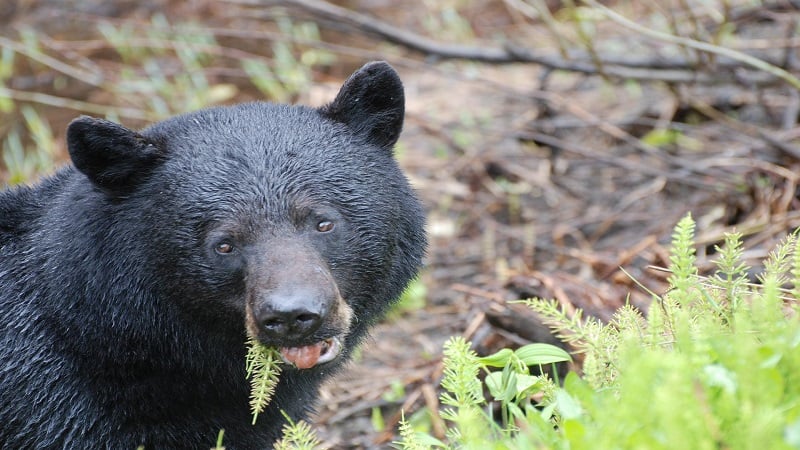
While a last resort, it’s important to have and know how to use bear spray. You’ll probably never need it, but make sure you have it accessible.
You can attach bear spray to your backpack or hip belt. You can even get a holster for it. Just make sure it’s accessible, and you’re comfortable using it.
Tip 5: Store Food Properly
Bears have incredible senses of smell. If you leave food out, they’ll find it. Make sure you have a bear canister or bear bag and use them properly.
Don’t assume there’s a bear locker at your campsite, even if the website says so. Bring a food storage system you know how to use, just in case.
Tip 6: Don’t Make Eye Contact
Be aware of the bear but don’t look them directly in the eyes. This may be seen as a sign of provocation, and bears are deceivingly fast.
Obviously, you want to look near the bear, but avoid eye contact at all costs while slowly backing away from the encounter in a non-threatening manner.
Tip 7: Don’t Back Down
If the bear starts making huffing noises or hitting the ground, they’re threatened by you, so back away slowly but stay large.
Black bears may bluff charge you, but bluff charges are more common among grizzlies. If the black bear starts to charge, prepare for it to be real.
Tip 8: Don’t Throw Food
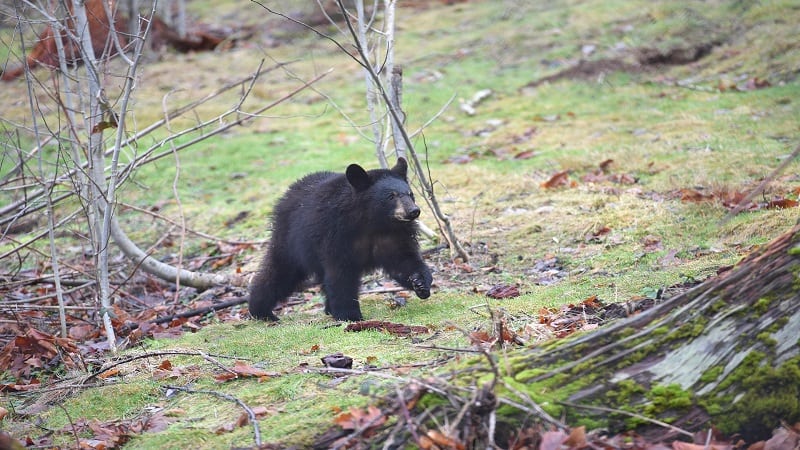
There’s this idea out there that throwing food will distract a bear, and you can escape. It won’t do that at all and will only worsen your situation.
Black bears become more emboldened around humans when food is left out, so never throw your food when in nature for any reason.
Wrap-up Notes
Look, the reality is that you’re very unlikely to ever run into a bear. Even on nature tours where people are seeking them, they don’t always see bears.
The biggest tip for avoiding bear encounters is proper food storage. If you don’t know how to hang a bear bag, practice a lot or bring a bear canister.
If you’re going into the backcountry in an NPS site, visitors centers often have bear bins that you can rent if you haven’t yet bought your own.
Whatever you do, if you see a bear, don’t climb a tree. Even grizzlies, who aren’t the best at climbing, are likely better climbers than you.

Erin Gifford has completed more than 300 hikes in Virginia. She is also the author of three hiking guidebooks from Falcon Guides. Need help finding a hike? Check out the Trail Finder feature or send Erin an email at [email protected].

